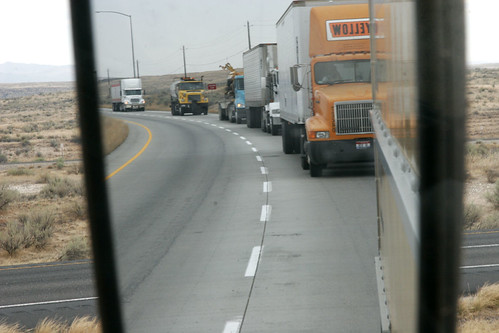
Road Pricing Beyond the Technology
Sunday 20 September, 2009 @ 9.00 – 17.00
Radisson SAS Royal Viking Hotel, Vasagatan 1 SE-101 24 Stockholm, Sweden
PRELIMINARY PROGRAMME
(As of 4 June, 2009; Subject to Change)
Road Pricing is an economic instrument that can be part of a package of measures to address overall mobility. This is not a seminar about the technology of road pricing but about strategic objectives, policy, monitoring, measuring and managing of road pricing schemes which are the core values of IBEC. Be prepared for frank discussions!
The benefits of pricing include the immediate traffic impacts but also the economic and social benefits that effective pricing can generate. Of course these benefits vary widely depending on the type and scale of pricing. Systems that provide a « guaranteed » level of service, such as those that involve some form of variable pricing should help business and individual travellers to solve a key transportation problem of the 21st Century – reliability. Then, there are the environmental concerns; to what extent does road pricing provide a useful contribution to greenhouse gas reduction? But, it’s all got to be implemented, and road pricing has a public image problem to address also.
Key Issues
● What are the economic benefits of road pricing and how can they be measured?
● Can road pricing provide large scale and long-term economic stimulus for a 21st Century economy?
● How should we inform and consult with stakeholders?
● What about social equity – do we understand the social distribution of costs and benefits?
● How should we manage politics and public expectations?
● Are HOT lanes a step in the right direction or a dangerous distraction?
● What have we learned from current efforts at implementation?
● Where have real benefits been delivered and what have we learned from the failures?
Time Schedule
9:00 Welcome
9:15 Session 1: What each region is doing in Road Pricing
This session will provide an international survey of Road Pricing policies and activities from around the world. More than being descriptive, each speaker will put developments into context by explaining transport objectives and how pricing is seen as a tool to address the transport challenges faced.
Chaired and coordinated by Alan Stevens, TRL, UK
10:45 Break
11:00 Session 2: Deployment challenges in relation to Stakeholders
Public acceptance is crucial for road pricing success. In this session, experts from the Road Pricing community will describe the challenges of informing and consulting stakeholders, particularly transport users, about the benefits of pricing.
Coordinated by Jane Lappin, Volpe National Transportation Systems Center, USA and Amy Ellen Polk, Citizant, Inc., USA
12:30 Buffet Lunch at the Fisk restaurant
13:15 Session 3: Evaluation challenges
This session will consist of presentations and discussion of Road Pricing deployment and evaluation challenges and how can these challenges be overcome. This will include a wide range of issues and all workshop attendees are invited to participate in the lively discussion that is anticipated.
Chaired and coordinated by Steve Morello, Egis Projects, France
14:45 Break
15:15 Session 4: Business case for society
This session will tackle the broad macro view of the economic and other benefits to society of road pricing and how we can tell if we are doing a “good job”.
Chaired by Kevin Borras, Thinking Highways, UK – Coordinated by Dick Mudge, Delcan, Inc., USA
16:45 Wrap-up
17:00 End of seminar
Registration Fee and Payment:
Fee: € 75 incl. taxes (approx. SEK 793 based on 5 May, 2009 exchange rates on www.xe.com). It includes seminar materials, 3 coffee breaks and lunch at the venue restaurant.
For registration and other related event information, please contact:
Odile PIGNIER – Harmonised Events – Email: odile@harmonised-events.com
Tel: +33 (0)2 41 54 76 30 – Fax: +33 (0)2 85 52 00 08
Find more information @: www.ibec-its.org
The International Benefits, Evaluation and Costs (IBEC) Working Group is a cooperative working group set up to coordinate and expand international efforts, to exchange information and techniques, and evaluate benefits and costs of Intelligent Transportation Systems (ITS). IBEC brings together the best knowledge and experience and is the focal point for discussion and debate of interest to the international ITS evaluation community. IBEC encourages more effective use of ITS evaluation information so that decision-makers can make more informed ITS investments.









